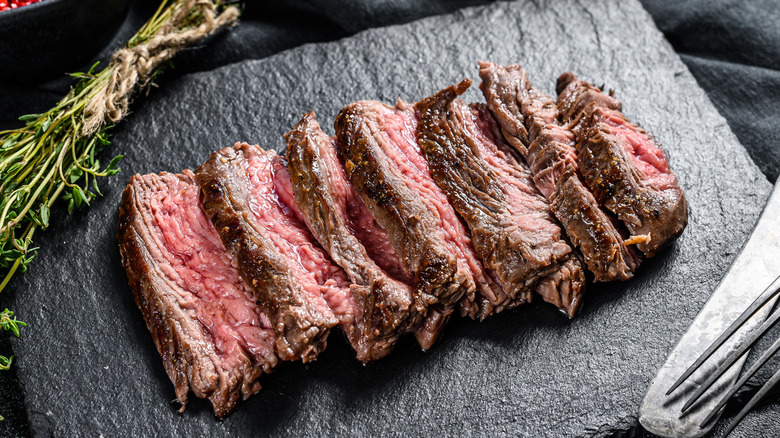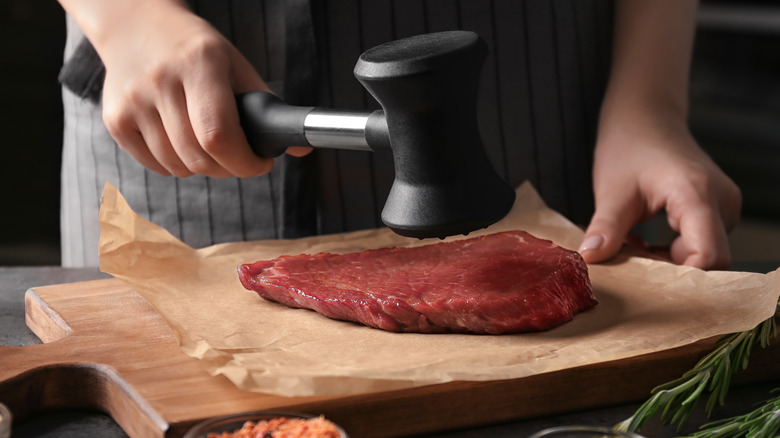Keep Flank Steak Tender And Juicy With One Extra Step
Tougher cuts of meat tend to have less marbled fat and come from parts of the cow that get a lot of exercise. These leaner and less expensive cuts are naturally tough, so to soften them up, they need to be either cooked slowly or undergo some tenderizing. The flank steak is one such cut, and if you want to cook it as quick as a fattier steak, you are going to have to break down the muscle tissue so the meat is easier to chew. There are a few methods for tenderizing meat, but by far, the most popular is pounding it with a mallet.
Meat mallets designed for pounding out and tenderizing steak commonly have a double head with rows of spikes on one side and a flat end on the other. Some models look like a large circle with a handle sticking upright. The side with spikes is used to break up connective tissue, and the flat side will help get the steak uniformly thin and melt-in-your-mouth tender.
How to pound flank steak
To properly pound flank steak, you will want to use the flat side of the meat mallet. Place the steak between two pieces of parchment or wax paper or in a large plastic bag that you've squeezed the excess air out of; you can also wrap the meat in plastic wrap. Using the flat mallet and some muscle power, pound out the steak evenly until it is about 1/2 inch in thickness. A thinner cut will cook much faster, so focus less on browning and more on gently cooking the meat through to your desired level of doneness. The result will be a delicate, supple bite of flank steak as opposed to something chewy and unforgiving.
If you don't have a meat mallet, any heavy kitchen tool with a flat side will do — the bottom of a saucepan, a cast-iron skillet, or a rolling pin will do fine; even a sturdy glass or empty wine bottle would work, just be careful not to risk breaking either.

